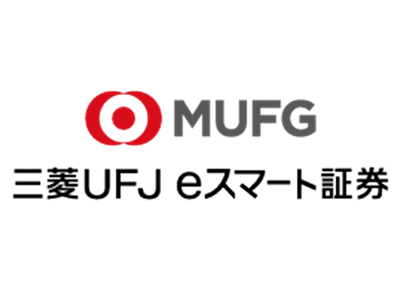PacketFabric Column & News
On Japanese Telecommunication Network History
This article will try to provide you with a brief history of telecommunications in Japan. It’s an interesting story that intertwines modern history of Japan with the post-WWII global business environment.
Following defeat in WWII, Japanese industry needed to be rebuilt with the latest technology and national pride had to somehow be restored. Telecommunications was the centerpiece to this effort.
But Japan did not have the technology of the West. For that, Japan had to borrow technological expertise and build out its own industries based on Western technology using technology transfer and reverse engineering.
The very first telecommunications network was actually completed in 1881 with a primitive telephony system, and the Ministry of Communications established in 1885 to regulate this emergent industry.
Telecommunications networks are a critical element in a nation’s infrastructure. Indeed, the Japanese bureaucracy is said to regard internal telecommunications as a matter of national defense (Washington Post, 1983). In more recent times, much has been made of Huawei equipment being potentially a national security concern. If foreign companies are supplying telecommunications equipment, there’s the threat of surreptitious intelligence gathering and over-reliance. On the other hand, in Meiji-era Japan, this philosophy of developing technology “in-house” made for low-quality systems that garnered little export interest from abroad.
Following WWII, the Ministry of Communications was abolished by the Occupation and two new ministries emerged: the Ministry of Postal Affairs (郵政省)and the Ministry of Telecommunications (電気通信省). Nearly all technical personnel and engineers that would otherwise have been in the military were instead posted to the nascent MoT, which, in 1952, became Nippon Telegraph and Telephone Corporation, known today as NTT. This is a arrangement is not to be overlooked – Japan received protection from the U.S Military, and so the Japanese State was able to plough its financial, political and human resources into NTT to build out a stable, predictable domestic telecommunications network that would provide the foundation for Japan’s early success in the high-technology market. Firms like Hitachi, Oki, NEC and Fujitsu (the so-called “NTT Family”) were private sector beneficiaries of this state-led policy. NTT guaranteed them domestic purchases of telecommunications equipment as the nation sought to rebuild its infrastructure with modern, world-class technology copied from the West. NTT Family firms were also encouraged and felt confident enough to invest heavily in R&D because NTT could be relied upon to buy those new products that were developed domestically, so long as they met NTT’s quality requirements.
In this way, the direction of Japanese telecommunications industry was determined largely by the state which believed that quality would be the key ingredient that would raise Japanese industry to the same or higher technological proficiency as the U.S.. To achieve this, domestic champions of industry needed to be brooded under the protective NTT patriarchy.
-Community buy-in-
Japanese consumers also bought into this vision as they subsidized the effort to build out a national infrastructure to rival the West.
For example, NTT issued “subscriber bonds” – where households that adopted fixed-line telephones purchased ¥100,000 bonds from the government which were repaid by NTT after ten years. Huge capital was amassed in lieu of foreign capital investment, which would have been cheaper but not in alignment with the strategy of importing the technology but building out the domestic network using equipment bona fide made in Japan. Thus, the typical discipline of capital markets in which supplies would be sourced in the most economic, efficient way possible was not applicable. NTT was a state-owned monopoly in this regard from 1952 to 1985.
However, NTT was not a rent-seeking monopoly. The goal of the monopoly was to invest in the nation’s infrastructure and capabilities. Community buy-in was essential to fostering a “one for all, all for one” communitarian spirit to capitalism – a kind of capitalism highly adapted to Japanese values and culture.
In terms of community buy-in, Japan’s fabled “lifetime employment” policy was a way by which NTT Family firms could give back to the public by providing a stable working environment and predictable paths to promotion. Because NTT could be relied upon to purchase the lion’s share of equipment (over 50% of telecommunications equipment domestically produced were purchased by NTT up until 1980), those firms had sufficient confidence to invest over the long term. However, in more recent times the business environment has changed drastically, with NTT demanding only 6.3% of domestic telecommunications equipment in 1998 – though this also speaks to the global success of NTT family firms. They had developed well-diversified customer bases outside of Japan – customers that purchased on merit, and not just NTT patronage.
– The Tide Changes –
By the 1980s Japanese industry had more than recovered from its post-war rut. NTT’s domestic procurement policy helped foster national champions that became respected global names in their own right with high technological expertise. By then, however, it was clear that open markets were a far more efficient way to allocate capital. NTT had a high cost base because of its policy of buying from NTT Family firms, and these costs were passed onto the user. The quality of the network and equipment was good, but a similar level of product could be bought overseas for far cheaper. Japanese corporate users began to voice their discontent. Added to that, firms like Toshiba and Panasonic (formerly Matsushita Denki) which were excluded from the NTT Family also pressured NTT to open its markets up. The straw that broke the camel’s back ironically came from the U.S., which demanded NTT open its procurement market up – a political maneuver on grounds of the widening trade deficit between the two countries.
In response to U.S. pressure, Prime Minister Suzuki Zenko fired NTT’s chairman, Akigusa Atsugi. Akigusa had publicly declared that the only products the U.S. could feasibly offer that NTT might be interested in were “mops and buckets” (Maswood, 1989). For this, and other scandals, Akigusa was summarily dismissed and replaced with a new chairman, a non-NTT man from the private sector, Shinto Hisashi. Shinto would usher in a new era for NTT and Japan, for he was a proponent of wholesale privatization of NTT. This marked a radical departure from the earlier role of NTT as patriarchal super-incubator.
– Towards a rational model –
Shinto inherited an organization with an impossibly high cost base that was inadequately equipped for the coming internet revolution. For example, NEC were selling fax machines to NTT at twice the market price. Further, NTT had favored closed standard systems when catching up with Western technology; while this had protected the domestic market in earlier times, now that Japanese technology had essentially caught up with the West, closed standards would hamper exports. NTT also carried a huge workforce just as the domestic telecommunications networks began to require less and less maintenance work. There was also the 290,000-strong NTT labor union which favored privatization (salaries would rise), but opposed a wholesale break-up.
According to a senior NTT executive I recently had dinner with, the nascent NTT went on a hiring spree, recruiting engineers and researchers straight out of high school and university. In keeping with Japanese tradition, graduates were housed together in company dormitories, sometimes two in a single room. NTT offices were designed to foster a community: in addition to the customary company cafeteria most large Japanese enterprises have, they also had shower rooms, sleeping quarters and even a barbershop! As the original goal was to build out a nationwide network infrastructure, many of its staff were located in the provinces. Those same provinces today are suffering from depopulation and as such the workforce has become old and bloated.
As the question loomed about what to do with the monolith that is NTT, a consensus was reached in 1985: NTT would be partially privatized and partially broken up. The telecommunications industry would be re-regulated to increase competition. The state would own a minimum of 30% equity in NTT, which would still be obligated to provide universal service across Japan. NTT was split into regional businesses, NTT East and NTT West and held under NTT Holdings.
– The Internet Age –
As far as the internet revolution was concerned, NTT developed its own version of ISDN, called “INS”. INS was a Japanese standard system incompatible with international standards and, as such, failed to catch on in global markets. Furthermore, the advent of broadband ADSL technology all but rendered INS obsolete.
IP telephony reduced the need for costly landline and long-distance services and reduced revenue for NTT’s traditional landline business by 20% (Anchordoguy, 2015) as corporate users switched en masse in 2004. NTT Docomo, the primary mobile phone operator, however, thrived as mobile phones became the communication tool of choice among young people. Its i-mode mobile internet service gave teenage girls a way of communicating in terse but emotion-filled messages, which we have come to know as the “emoji”.
New market entrants like Softbank brought high speed internet to the masses. Broadband subscriptions grew rapidly from 1999, when only 20% of Japan’s population was connected to the internet, up to 54% in 2002. Softbank enjoyed success in part due to not having to provide universal coverage like NTT.
As non-Japanese IP technology took domestic market share, NTT Family firms who followed NTT’s objective of developing domestic technology, missed the boat and forfeited switching and router equipment market share to companies like Cisco and Juniper.
The upside of all this is that NTT succeeded in its mission to build a stable universal network built largely from domestic technology. Particularly in the last mile, or the “local loop”, NTT invested heavily in fiber-to-the-home networks. Japan’s network stability owes to the prevalence of dedicated lines which do not suffer from downtime issues seen in other countries. Furthermore, NTT’s local loop was unbundled in 2000, allowing competitors to utilize the physical network built out by NTT.
What the future holds is very much uncertain, with NTT having essentially served out its purpose of making Japan a technology giant and incubating a host of Japanese companies that supplied it. The monolithic institution that is NTT today is vastly different to the NTT of yesteryear. Understanding the history of telecommunications in Japan, particularly the pivotal role NTT played, is essential to understanding the history of industry in Japan.
Written by Julian Israel
Marketing Strategist
INAP Japan
References:
Anchordoguy, 2015, Reprogramming Japan: The High Tech Crisis under Communitarian Capitalism, Cornell Studies in Political Economy
Hiroyuki Odagiri and Akira Goto, “The Japanese System of Innovation,” in National Innovation Systems, ed. Richard Nelson (Oxford, 1993), 95
Syed Javed Maswood, “JAPAN AND PROTECTION: THE GROWTH OF PROTECTIONIST SENTIMENT AND THE JAPANESE RESPONSE”, Routledge Japanese Studies Series, 1989
Rowen, 1983, Hisashi Shinto: Discovering America’s Secret, Washington Post
- Call us
- +81-3-5209-2222



